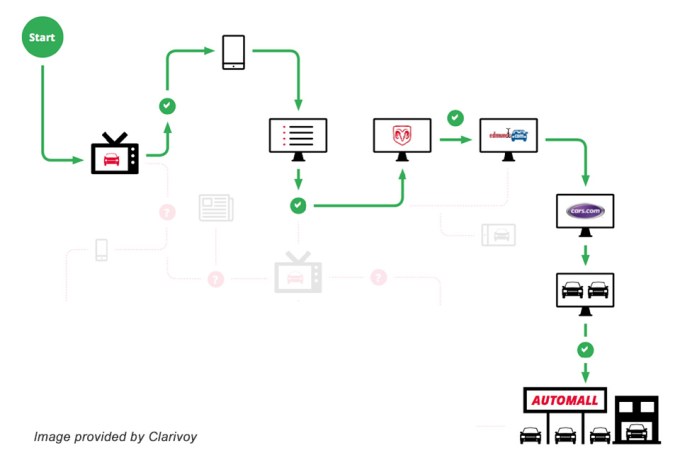As lucrative as they may be, I normally find ad tech/marketing tech companies to be pretty boring. However, Clarivoy’s interesting concept catches my attention amidst a sea of marketing tech awash with jargon. The Columbus, OH startup recently closed a $1.37 million funding round in December led by Rev1 Ventures. This accompanies their $750,000 loan from the Innovation Ohio Loan Fund.
As an attribution platform, Clarivoy aims to connect the dots between offline ads (like those on television), the multi-channel digital identities of consumers watching offline ads (e.g. who they are on social media, email and other digital properties) and finally the subsequent online and offline purchases that take place afterward.
In other words, if you buy something at a particular store, Clarivoy can tell the likelihood that a TV advertisement caused you to buy it. You might be asking yourself “how is this possible?” I asked the same thing.
According to CEO Steve White, Clarivoy is using a homegrown technology that combines the use of cookie IDs, social graph monitoring, IP address monitoring, and Device IDs. They also created a proprietary scoring algorithm and some other secret, intellectual property (that they wouldn’t talk much about) to enable this level of customer journey visibility.
One way to think about it, according to White, is to consider a car buying customer journey. In this scenario—and through direct partnership with a particular brand or dealer—Clarivoy is keeping track of three realms:
- when and where specific brand television ads are run
- the multi-channel digital identity of consumers that would have been exposed to those ads based on their location and online response
- offline activity taken by those same multi-channel identities, namely the correlation of those personal identities to purchases.
It seems impossible, but according to White, if you think about it in reverse order and not in real-time, you can begin to understand how they do it.
The car dealership shares with Clarivoy the names of those who actually purchased a car. Then Clarivoy’s secret-sauce IP is able to match those people with their digital identities (social media, etc). Clarivoy can review their digital activity and couple that with the timing of offline advertisements and then using their algorithm can come up with a probabilistic score of whether or not they were exposed to the offline ad and if they reacted to it.
In this way, dealers are able to tell if the offline ads are effective and to what percentage. This allows them to review and prioritize their advertising budgets with effectiveness data.
“Using our tech, we are linking 35% of [offline] sales to a digital engagements.”
– Clarivoy CEO Steve White
While the offline attribution is the most interesting to me and seems the most novel, the company also reminded me they still have a holistic offering that covers retargeting, paid search, third party sites, email, social, etc. When the analytics they are tracking are completely within the digital realm, they can measure deterministically instead of probabilistically.
I’ve only heard of a few companies attempting to tackle offline attribution—companies like Nomi or Datalogix.
Regardless, Clarivoy hopes to use this technology to help brands and companies better prioritize their ad dollars. They’ve worked with several auto dealers up to this point but plan to expand operations.

